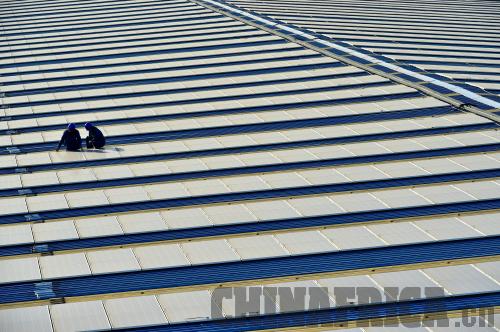| 
China has become the most prominent user and producer of coal in the world and also the largest emitter of carbon dioxide and other greenhouse gases. However, it is currently establishing the world's largest renewable energy system. This, by 2013, came in at over 1 trillion kilowatt-hours, more than the total electrical energy produced by the power systems of France and Germany. As part of this drive toward renewable energy, photovoltaic (PV) technology is at the forefront of the battle to reduce pollution and make China greener.
PV is the method of generating electrical power by converting sunlight into direct current electricity using semiconducting materials. A PV system employs panels composed of a number of solar cells to supply usable solar power.
"China had installed nearly 19.5 gigawatts of solar panels as of the end of 2013. However, many solar installations failed to generate as much electricity as planned," said Ji Zhenshuang, Deputy Director at the Beijing-based China General Certification Center. According to government statistics, the Chinese solar industry, which barely existed a decade ago, exploded to reach a production capacity of 26 gigawatts in 2013, manufacturing more solar panels than the rest of the world combined.
Market dominance
Between January and the end of June, China increased its solar capacity by 3.3 gigawatts, more than double the additions over the same period last year, and equivalent to the entire solar capacity of Australia - which is renowned for being one of the world's sunniest places.
The pendulum swing from Europe to Asia is by and large about how China incentivizes solar power compared to its competitors, along with the enormous size of the Chinese solar panel manufacturing industry, which currently dominates the market for PV construction.
Li Hejun, Chairman and CEO of Hanergy and President of China New Energy Chamber of Commerce, told ChinAfrica, "When you consider solar panel production, it's important to make a distinction between the firms that focus on traditional, crystalline-silicon based modules and those that make next-generation, thin-film panels."
"China has always been a cost leader in manufacturing, so it's natural that solar production is predominantly done here. What's different, however, is that China is emerging as not just a manufacturer, but a leading technological innovator in key solar technologies, especially thin film, which Hanergy is helping to pioneer. Unlike traditional solar technology, Hanergy's thin-film technology can be applied to every aspect of our life, and can be integrated in anything that moves, can be carried or worn. In this respect, Hanergy is adapting to the market by developing products for commercial consumer use instead of the business-to-business sector, like power stations in which polysilicon companies compete," he said.
Motivating factor
The main motive for China's turn toward renewables is the recent well-documented phenomenon of smoggy skies and polluted water. The daily news headlines have been causing a stir among the public, while the insistent smog is making the air unbreathable in many of the major cities. This has proven a solid motivation in the necessity to create an energy system that is not so dependent on fossil fuels and more on green renewables.
China's collective battle against pollution is long-sighted and persistent. There are the obvious measures of judging whether pollution has abated - looking out a window and seeing a sky that isn't blurred with smog, measuring PM 2.5 (fine particles with a diameter of 2.5 micrometers or less present in air and causing respiratory problems if their volume increases) and soil and water quality. But there are also other, more nuanced factors. Li's prediction is that thin-film solar panels will make the largest impact over the long term, for China, and perhaps for the rest of the world. |